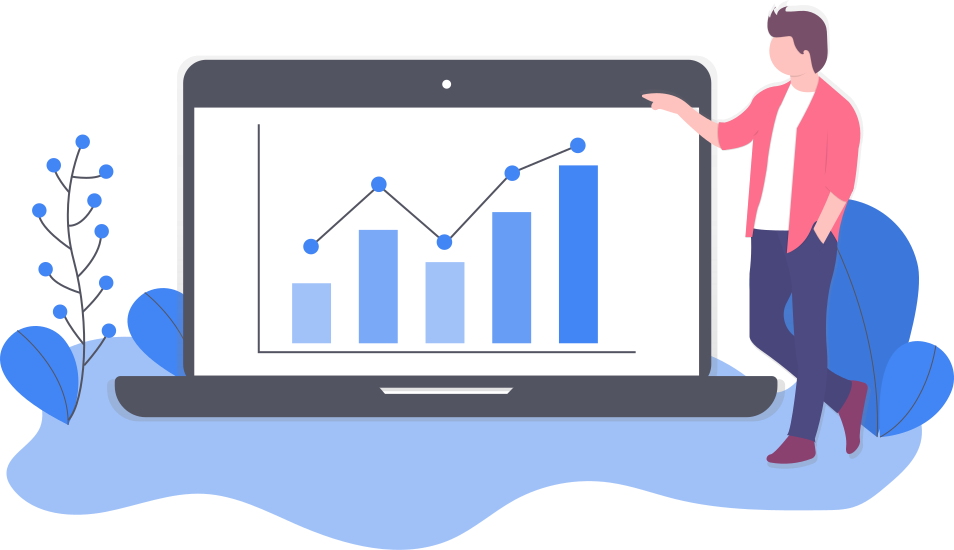What is Kaizen?

In Japanese, Kaizen (改善) means to improve or change for better. In Lean project management, Kaizen is defined as a philosophy seeking to improve a process through small, continuous, positive changes applied by team members across every level of an organization, over a long period.
Continuously improving a business process can easily be compared to musical instrument tuning - it is not something you can do once and for all, it has to be done regularly, often mid-performance, to maintain the quality of the results. The goal of a Kaizen strategy is to ensure that your process continues to work to its best capabilities and to benefit your customers. But one cannot assume each member of your company will adopt the philosophy and things will change of their own accord. For that reason, it may be useful to adopt tools that will ease the team into the continuous improvement mentality.
Kaizen in Kanban & using value streams
Kanban, as a methodology, asks you to start with whatever you’ve been doing so far and look out for small things that you could change since to improve, you first need to understand what is happening right now. Mapping your value stream will be the best way to establish improving what you really should focus on.
Being able to spot your process’s bottlenecks, to measure your cycle time and total lead time are powerful indicators for driving changes, and assessing if they are delivering fruit. When using the Kaizen approach, teams should see their Cumulative Flow Diagram lines as smooth, with impediments reduced and cycle times with increased throughput.
Daily stand-ups around your Kanban board, alongside other Kanban-specific meetings, can be a great excuse to practice Kaizen! These short team meetings will help to better coordinate work and point out flow blockages and areas where people might be overburdened.
How to plan a Kaizen session?
Weekly, monthly, or quarterly review sessions are focused strictly on improving the quality of work delivered to customers, on the elimination of waste in your process, and the happiness and safety of your employees.
The general flow of a single Kaizen event follows these steps:
Step 1: Set values and scope
Create a value stream and name the goals of the event, based on what matters to your customers, more than on what you feel may be good to improve. You also need to limit the scope of the planned improvements - and it will be important to avoid planning too broad a scope of action. Stay within one team, one process step, and with as few actions per session as possible within the scale of your team, for the sake of them standing the chance to attain the goal.
Step 2: Plan
Make a detailed action plan based on the goals identified through value stream mapping. Detailed is the operative word here, as Kaizen sessions run at the danger of becoming too wide, too vague, too bold, and - hence - impossible to achieve, to the point of turning wasteful. Make the plan as specific as possible. Apart from technical requirements, your specifications should include values and measures of quality, quantity, man-hours consumption, cost estimation, customer satisfaction, and more.
Step 3: Act
Implement the changes you have planned. Depending on the scope of your event, this part can take anything from a day to several months, but regardless of that, the rules stay the same. While it is ongoing, keep tabs on the process, on the consumption of assigned resources, and the actions staying true to the plan. For larger events, there would often be a dedicated person assigned to overseeing this step in particular.
Step 4: Review
Review the results with the team and - if not satisfactory - plan how that should be addressed. This may also mean reporting on what has been accomplished to superiors, together with discussing team performance and the aims of your next Kaizen session.
Step 5: Standardize
Establish new standards based on the event’s results, to ensure the improvement doesn’t remain a one-time occurrence. For the session to stay in line with Kaizen and Kanban’s principles, transfer of the newly achieved improvements to its future instances is necessary, to say the least, since, in an ideal scenario, it is only the first increment of an ever-improving practice.
This flow is an extension of the Plan🡪Do🡪Check🡪Act model, and it should always aim to add value for your clients. If teams say they have improved, but there is no value carried over to the client, then, along with Kaizen thinking, that may not have been an improvement at all.
Problems with getting started?
Kaizen is a multifaceted improvement model, and the beginnings of its implementation can be challenging. The Lean Six Sigma method recommends basing your initial choices on data. But it is also easy to begin just with re-organization of workers and the office or factory floor, using techniques such as the 5S, Capturing the voice of the customer and Gemba.
However you begin, know that by implementing Kanban, you have already started your Kaizen journey - and it’s a promising one to take!
Did you know?
The Kanban Tool® project boards offer a simple, scalable way to introduce Kanban and Lean to a company. Start with a single project and let others adopt the new approach with time. There are no set requirements for getting started with Kanban. Try now!
What tangible benefits adopting the Kaizen strategy will bring?
- Easier team management, through teams being given a value stream framework, with actionable ways in which to improve.
- Smoother process operation, leading to happier customers and teams, and higher product quality.
- Closer alignment of team & customer goals and ways of thinking, adding up to higher employee motivation and better communication.
- Higher success in adapting to change, since change does become a constant part of everyday operations, resulting in teams’ adoption of a growth mindset.